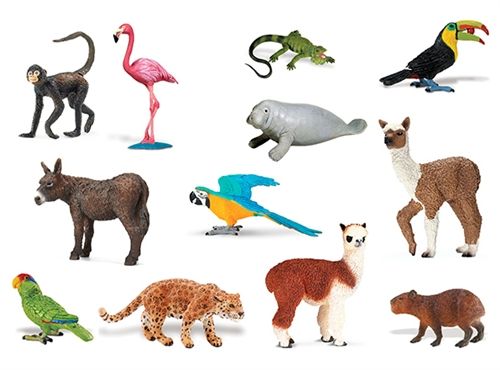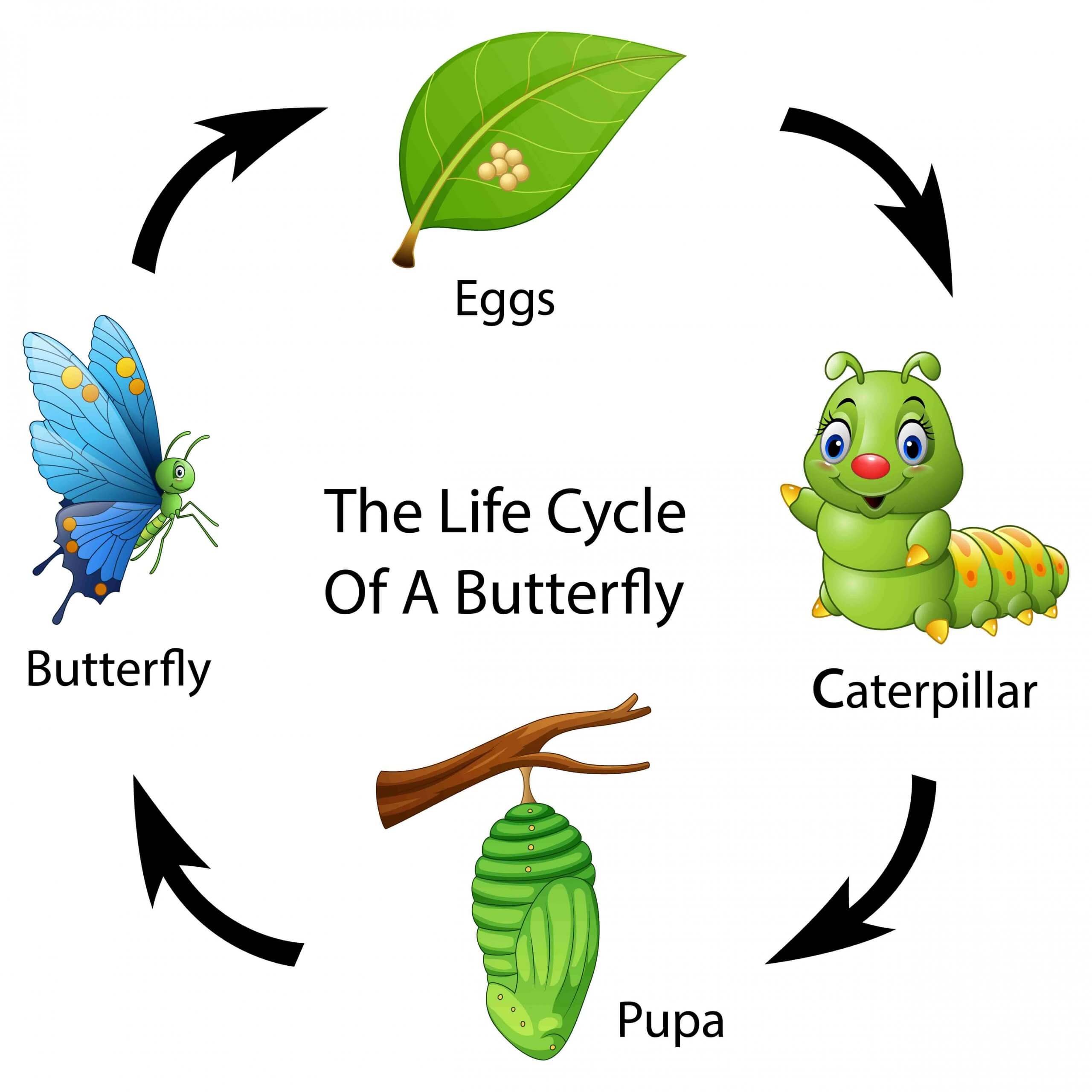The Circadian Cycle in the Animal Kingdom


Written and verified by the lawyer Francisco María García
The circadian cycle in the animal kingdom can be described as the variations in an animal’s physiological nature that coincide with environmental cycles. These cycles, also called rhythms, are usually repeated every day on a regular basis.
These variations, which are synchronized with day and night, can vary every 20 to 28 hours. In the cases of animals that live far away from the tropics, their circadian cycle adapts to the seasons. This adaptation allows them to adjust their daily activity to match the time when there’s sunlight.
Animal circadian cycles: light and temperature
Circadian cycles occur without any external intervention. Scientists have experimented and observed various types of living beings and their relationship to their sleep patterns or hunger. These experiments show that these behaviors repeat themselves in a cyclic way. In other words, they basically respond to changes in light and temperature.
Research suggests many animals’ circadian rhythms may actually be flexible and regularly changing.
The circadian cycle of animals in history
Throughout history, the circadian cycles of animals have been closely followed by scholars such as Aristotle, who observed daily and annual changes, even in the plant kingdom.
Subsequently, Galen of Pergamon also described bird migration, animal sleep cycles, and hibernation in detail. The variations that the Greek philosopher observed were considered to be reactions to nature’s stimuli.
However, after some scientific studies, experts have established that both changes are independent. Nevertheless, the environment does promote or restrict them.
It was the French astronomer Jean Mairan who, in the 18th century, created the first systematic study on the circadian cycle. In these studies, Mairan concluded that the daily rhythm of animals had no close relationship with the environment. Up to that point, scientists had thought that the two were closely linked.
Circadian cycle in mammals
Mammals are the animal group whose circadian cycles have been studied the most. The analyses obtained from these studies show that the circadian cycle “control instrument” is located in the suprachiasmatic nucleus, in the hypothalamus.

The suprachiasmatic nucleus of the middle (or tuberal) hypothalamus is an area that manages a hormonal set with daily physiological variations. One of these hormones is estradiol and another important hormone to consider is the luteinizing hormone. These two hormones are responsible for acting on various organs and transmitting circadian messages from the suprachiasmatic area.
Hormones produced in the tuberal hypothalamus are more abundant at night than they are in the day. When the animal’s eye starts to perceive darkness, the systems that promote growth or drowsiness start working.
External factors
Even though the scientific community has already established that external factors don’t govern the circadian cycle in animals, they do alter them. Scientists have proven that there is a regulatory and altering function that some factors can have.
Caffeine or alcohol, for example, can cause these alterations. Similarly, very bright light or radical changes in temperature, especially at night, can also produce some alterations.
Other secondary rhythms
There are other organs, apart from the suprachiasmatic nucleus, that have the ability to fulfill the role of secondary “circadian clocks”. These organs have the ability to generate unrelated responses to the hypothalamus. However, these responses are considerably weaker.
Other factors that manage to influence the circadian cycle are pregnancy and atmospheric pressure levels. When strong time zone changes occur, retracing or anticipation of the cycles can also happen.

Circadian cycles are not the only cycles that occur, however. In addition to them, there are other kinds that appear on a recurring basis. Ultradian cycles are one of them. These are the recurrent cycles that occur during the dream states. On the other hand, we have infradian cycles. These are, to name a few, the cycles of the moon and the heat seasons in animals that we also know as “estrus”.
Migrations in various groups of animals are also part of these non-circadian rhythms. These occur annually with the seasons or every two years. Some of them even go through the germinating seasons of the plant kingdom.
In summary
As we can see, everything indicates that living beings possess a set of temporalities, not just one. There are different “times” inhabiting the mind and body of living beings. Many cultures tell us about the conjunction of various times and, apparently, science is discovering that this can, in fact, be something real.
Before, we used to think that disruptions to circadian rhythms may result in reduced health and survival. However, the latest research suggests that many animals have altered circadian rhythms – or lack a circadian rhythm – with no apparent ill effects. As a result, an adaptable internal clock may prove to be quite advantageous.
The circadian cycle in the animal kingdom can be described as the variations in an animal’s physiological nature that coincide with environmental cycles. These cycles, also called rhythms, are usually repeated every day on a regular basis.
These variations, which are synchronized with day and night, can vary every 20 to 28 hours. In the cases of animals that live far away from the tropics, their circadian cycle adapts to the seasons. This adaptation allows them to adjust their daily activity to match the time when there’s sunlight.
Animal circadian cycles: light and temperature
Circadian cycles occur without any external intervention. Scientists have experimented and observed various types of living beings and their relationship to their sleep patterns or hunger. These experiments show that these behaviors repeat themselves in a cyclic way. In other words, they basically respond to changes in light and temperature.
Research suggests many animals’ circadian rhythms may actually be flexible and regularly changing.
The circadian cycle of animals in history
Throughout history, the circadian cycles of animals have been closely followed by scholars such as Aristotle, who observed daily and annual changes, even in the plant kingdom.
Subsequently, Galen of Pergamon also described bird migration, animal sleep cycles, and hibernation in detail. The variations that the Greek philosopher observed were considered to be reactions to nature’s stimuli.
However, after some scientific studies, experts have established that both changes are independent. Nevertheless, the environment does promote or restrict them.
It was the French astronomer Jean Mairan who, in the 18th century, created the first systematic study on the circadian cycle. In these studies, Mairan concluded that the daily rhythm of animals had no close relationship with the environment. Up to that point, scientists had thought that the two were closely linked.
Circadian cycle in mammals
Mammals are the animal group whose circadian cycles have been studied the most. The analyses obtained from these studies show that the circadian cycle “control instrument” is located in the suprachiasmatic nucleus, in the hypothalamus.

The suprachiasmatic nucleus of the middle (or tuberal) hypothalamus is an area that manages a hormonal set with daily physiological variations. One of these hormones is estradiol and another important hormone to consider is the luteinizing hormone. These two hormones are responsible for acting on various organs and transmitting circadian messages from the suprachiasmatic area.
Hormones produced in the tuberal hypothalamus are more abundant at night than they are in the day. When the animal’s eye starts to perceive darkness, the systems that promote growth or drowsiness start working.
External factors
Even though the scientific community has already established that external factors don’t govern the circadian cycle in animals, they do alter them. Scientists have proven that there is a regulatory and altering function that some factors can have.
Caffeine or alcohol, for example, can cause these alterations. Similarly, very bright light or radical changes in temperature, especially at night, can also produce some alterations.
Other secondary rhythms
There are other organs, apart from the suprachiasmatic nucleus, that have the ability to fulfill the role of secondary “circadian clocks”. These organs have the ability to generate unrelated responses to the hypothalamus. However, these responses are considerably weaker.
Other factors that manage to influence the circadian cycle are pregnancy and atmospheric pressure levels. When strong time zone changes occur, retracing or anticipation of the cycles can also happen.

Circadian cycles are not the only cycles that occur, however. In addition to them, there are other kinds that appear on a recurring basis. Ultradian cycles are one of them. These are the recurrent cycles that occur during the dream states. On the other hand, we have infradian cycles. These are, to name a few, the cycles of the moon and the heat seasons in animals that we also know as “estrus”.
Migrations in various groups of animals are also part of these non-circadian rhythms. These occur annually with the seasons or every two years. Some of them even go through the germinating seasons of the plant kingdom.
In summary
As we can see, everything indicates that living beings possess a set of temporalities, not just one. There are different “times” inhabiting the mind and body of living beings. Many cultures tell us about the conjunction of various times and, apparently, science is discovering that this can, in fact, be something real.
Before, we used to think that disruptions to circadian rhythms may result in reduced health and survival. However, the latest research suggests that many animals have altered circadian rhythms – or lack a circadian rhythm – with no apparent ill effects. As a result, an adaptable internal clock may prove to be quite advantageous.
All cited sources were thoroughly reviewed by our team to ensure their quality, reliability, currency, and validity. The bibliography of this article was considered reliable and of academic or scientific accuracy.
- Van Oort, B. E., Tyler, N. J., Gerkema, M. P., Folkow, L., Blix, A. S., & Stokkan, K. A. (2005). Circadian organization in reindeer. Nature, 438(7071), 1095-1096.
- Diepen, H. C. V. Retinal and neuronal mechanisms of circadian photoreception.
- Niño Caballero, Á. (2020). Genes reloj y ritmos circadianos en tejidos implicados en reproducción.
- Cardinali, D., Carpizo Alfayate, R., Cos Corral, S., Fernández López, R., Mediavilla Aguado, M. D., Noriega Borge, M. J., … & Sánchez Barceló, E. J. (1994). Introducción a la Cronobiología. Fisiología de los ritmos biológicos.
- de Prado García, B. M. (2004). Ritmos circadianos y neurotransmisores: estudios en la corteza prefrontal de la rata (Doctoral dissertation, Universidad Complutense de Madrid).
This text is provided for informational purposes only and does not replace consultation with a professional. If in doubt, consult your specialist.








